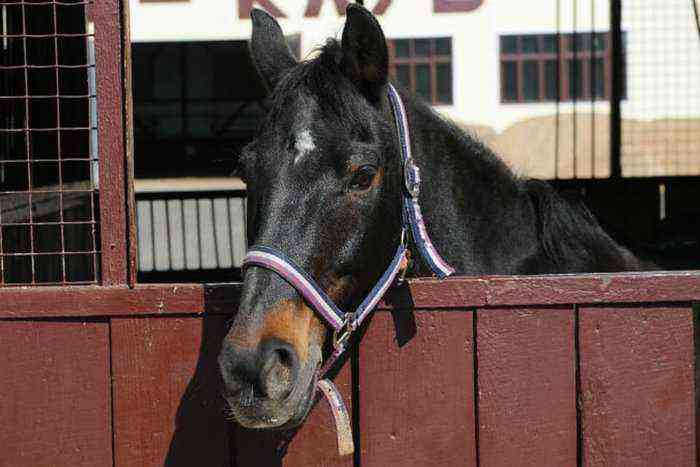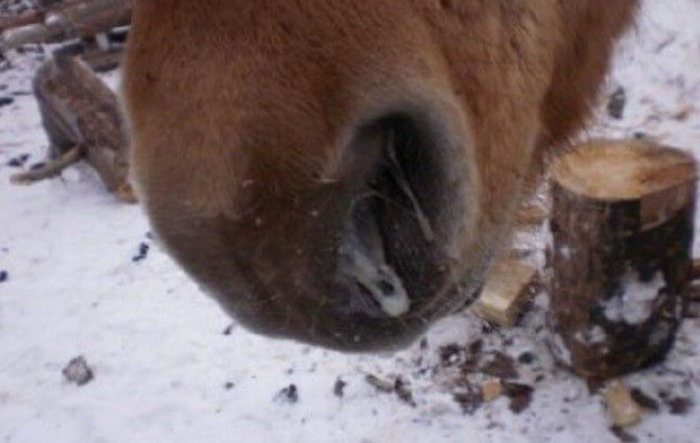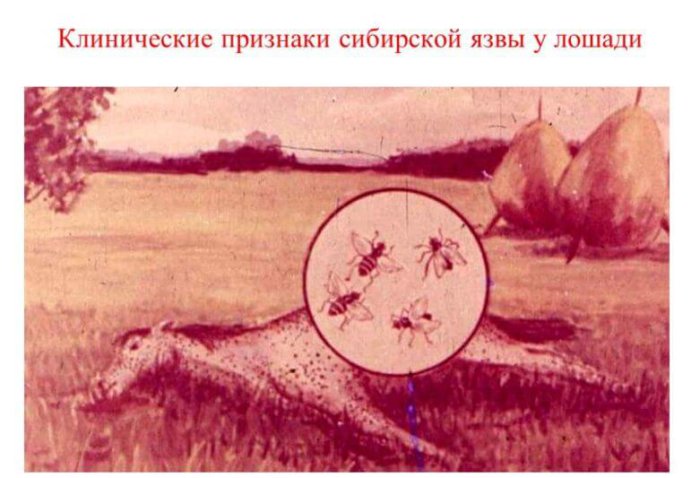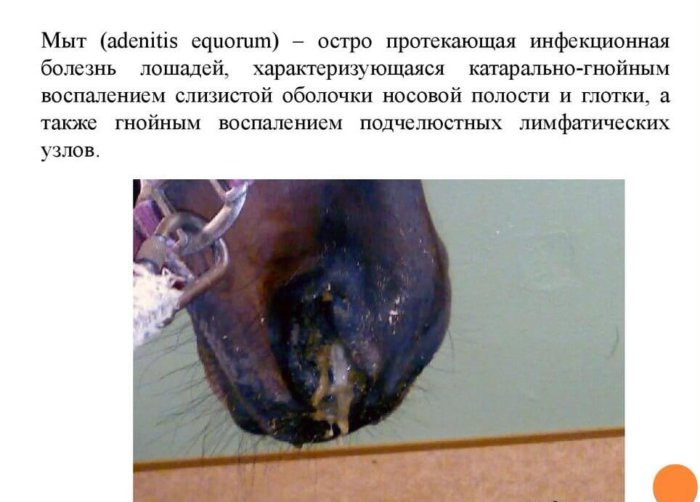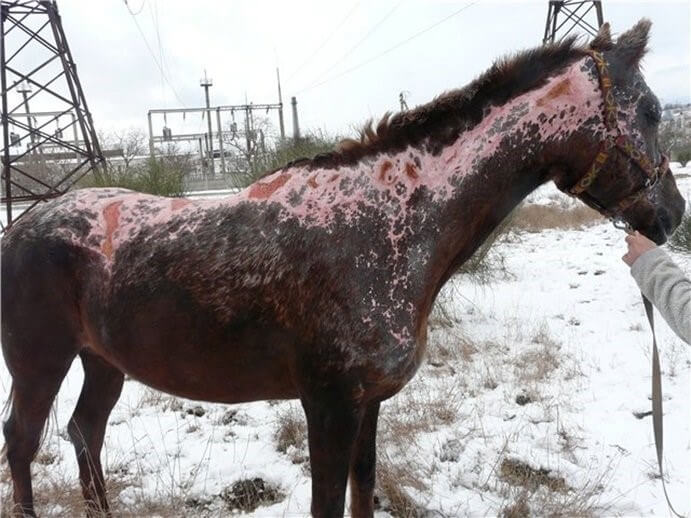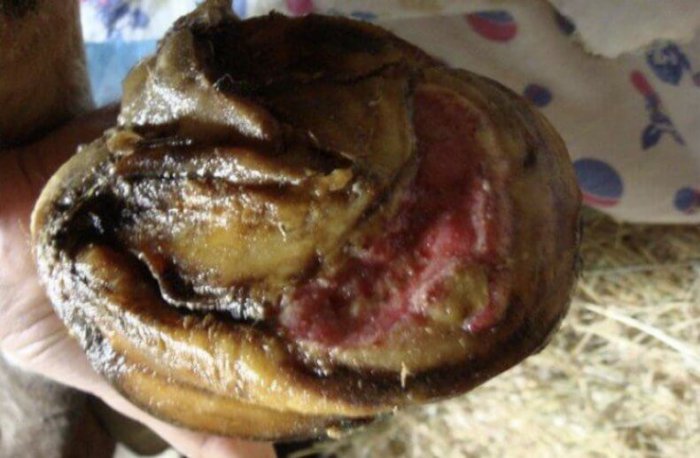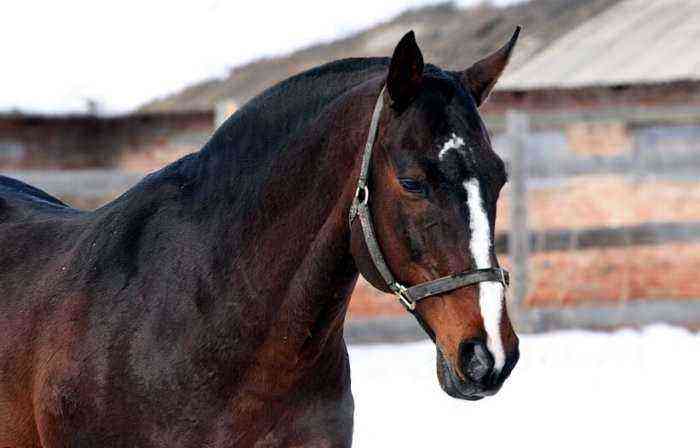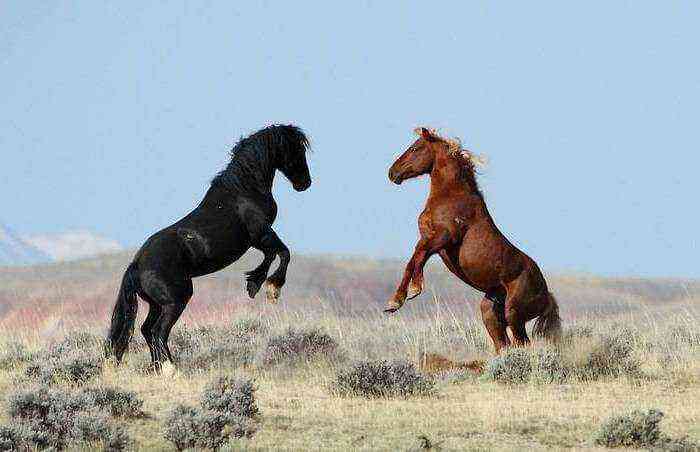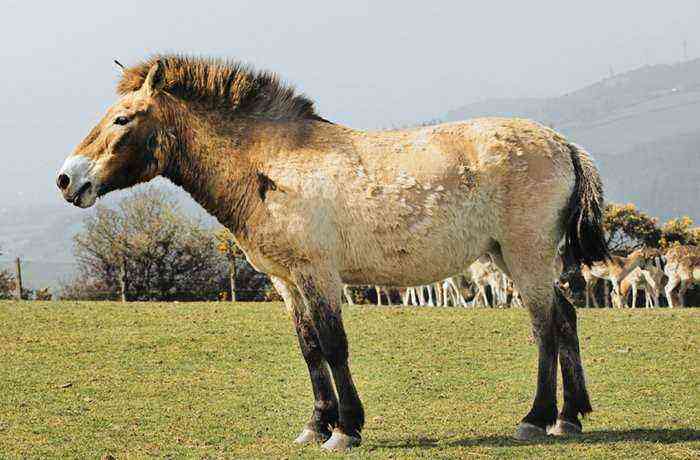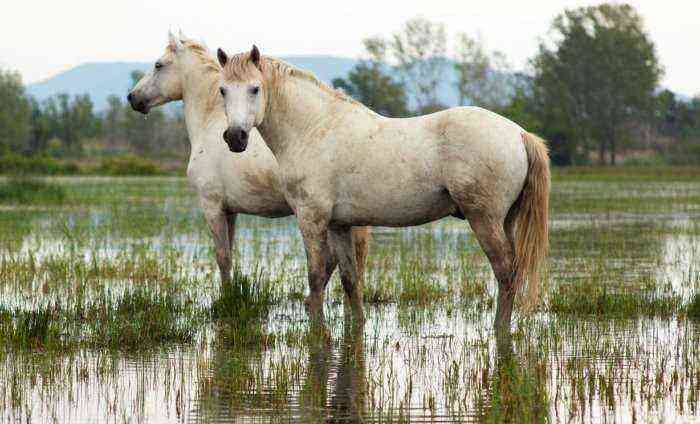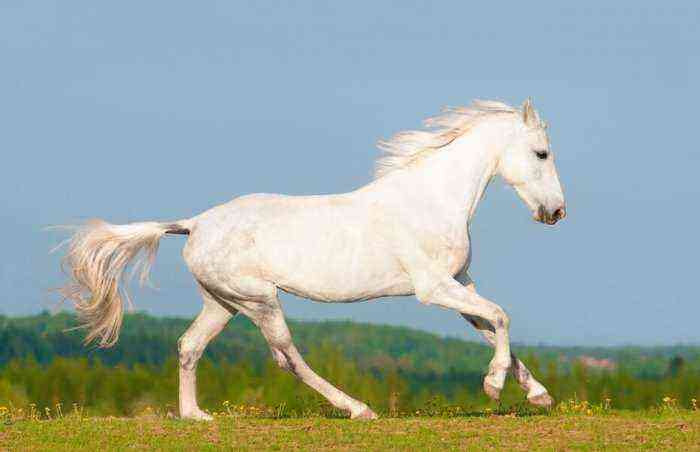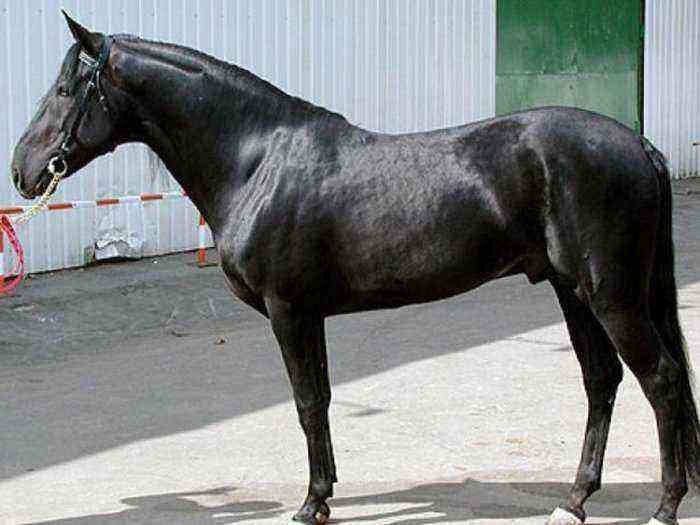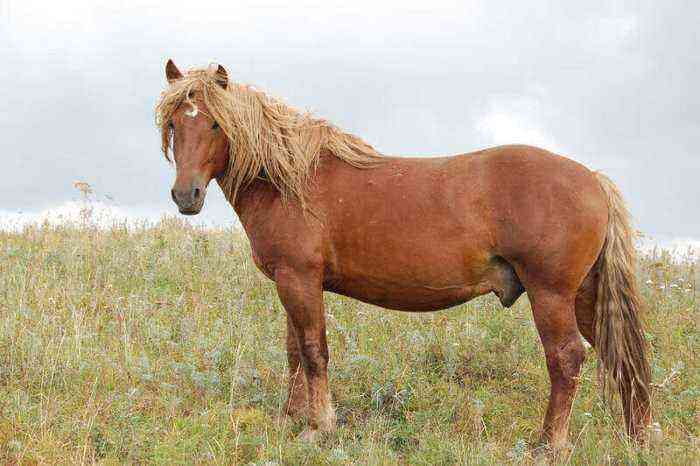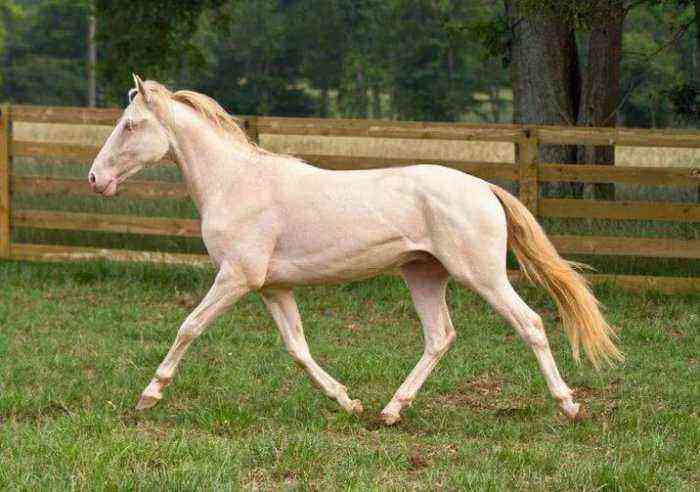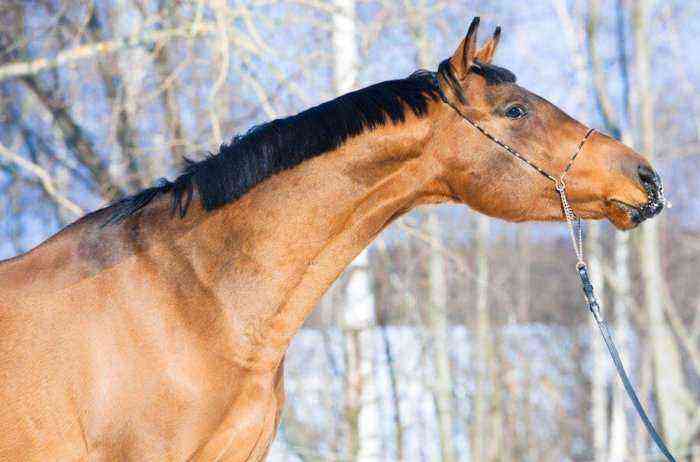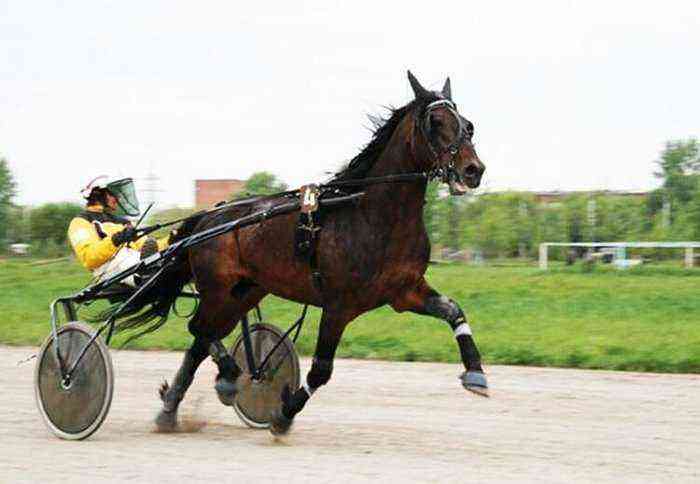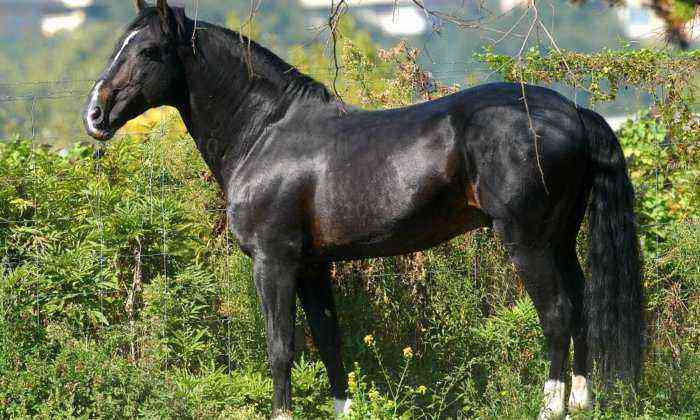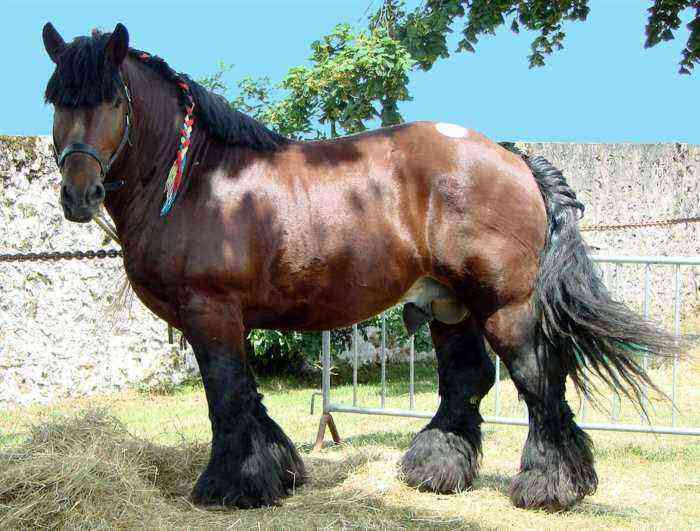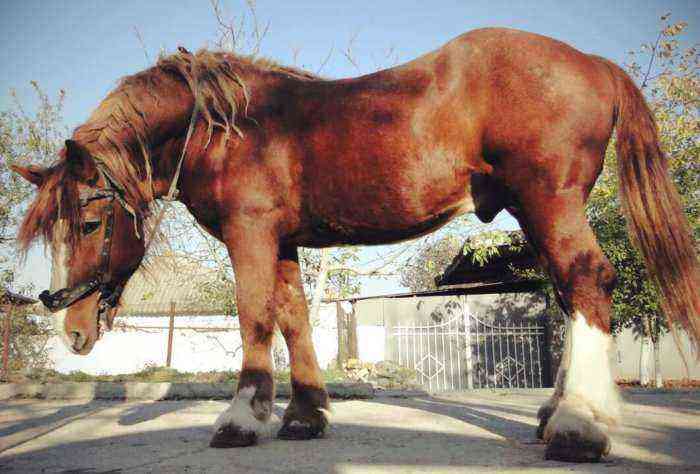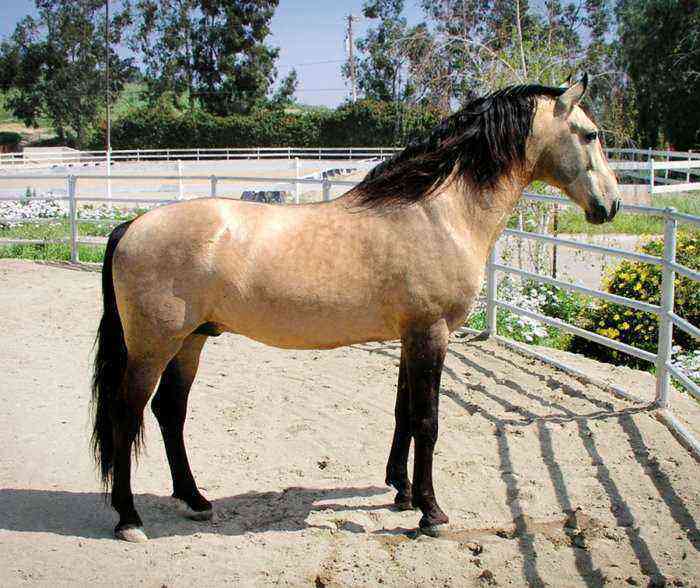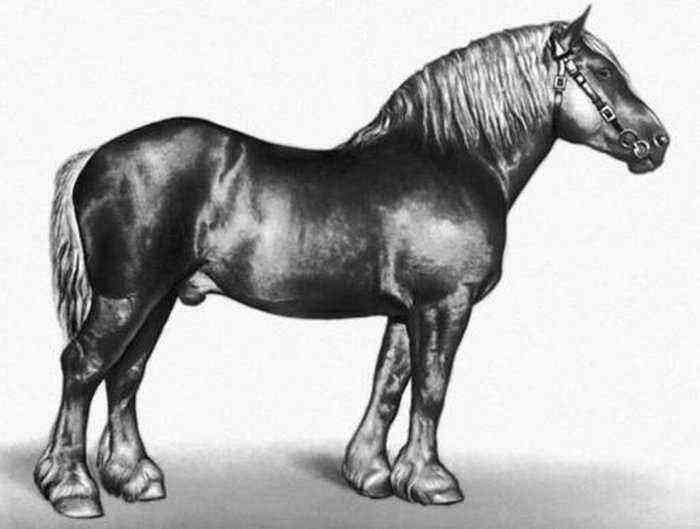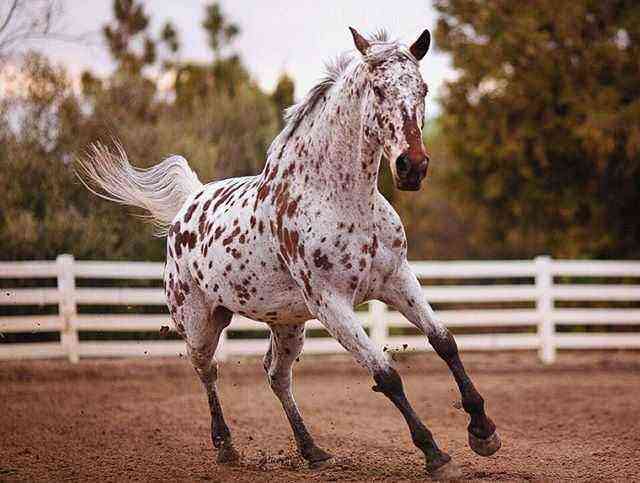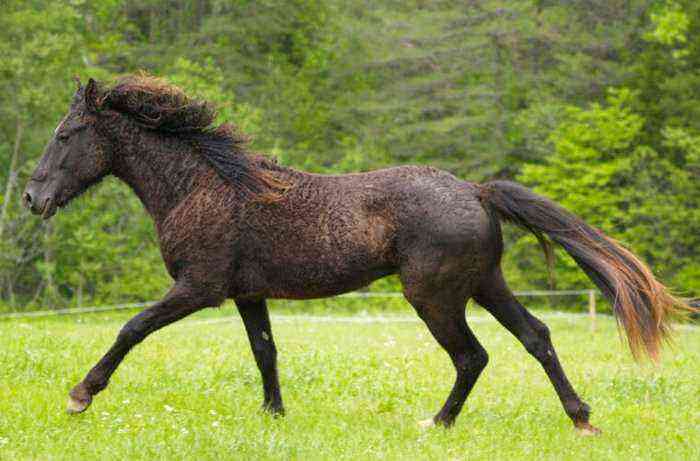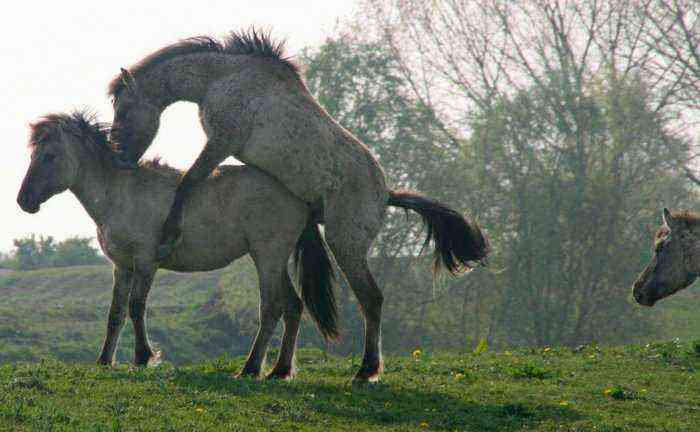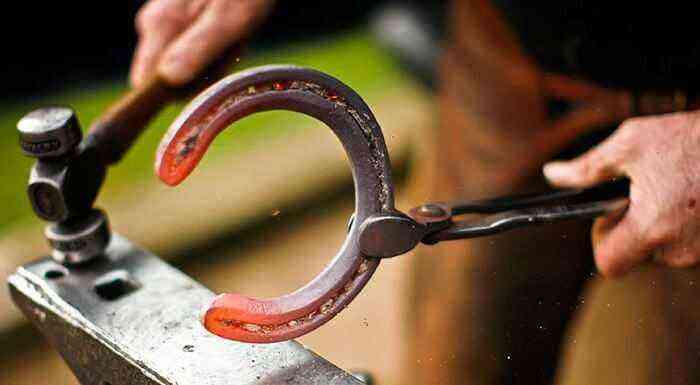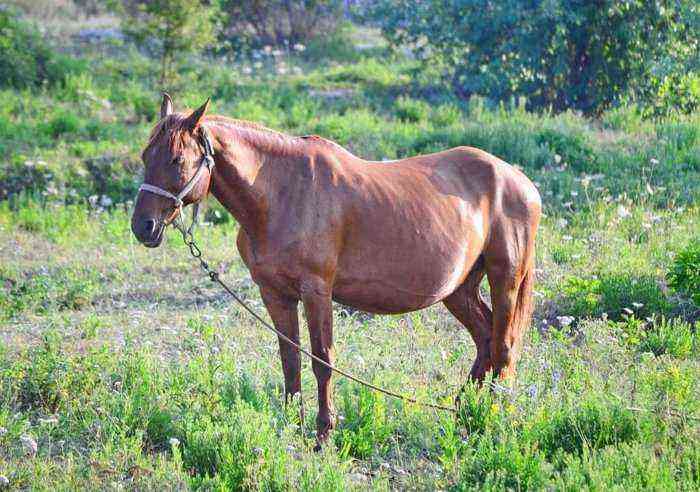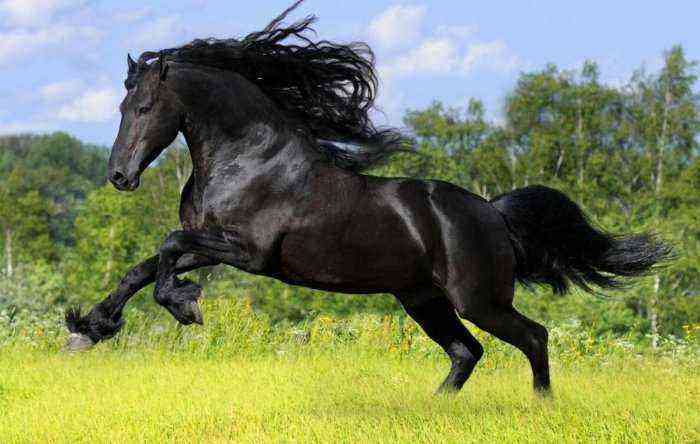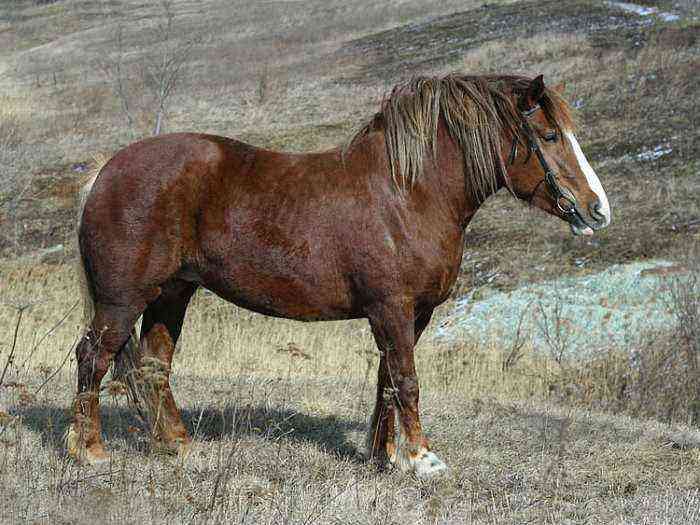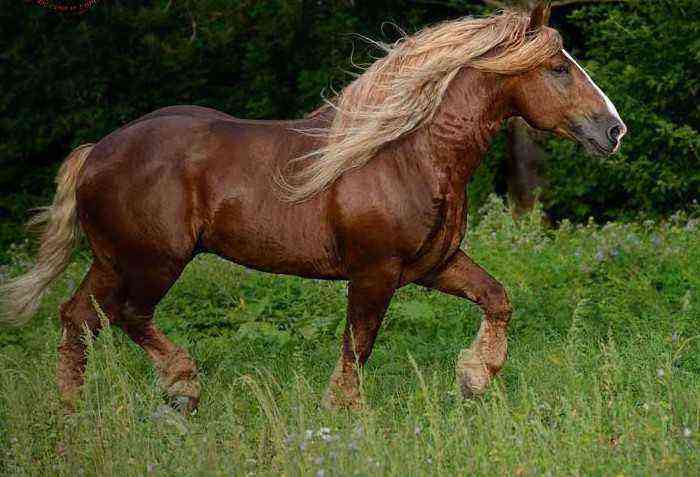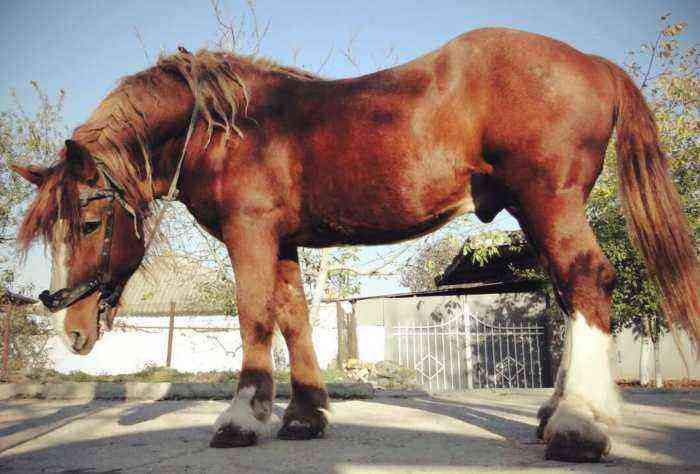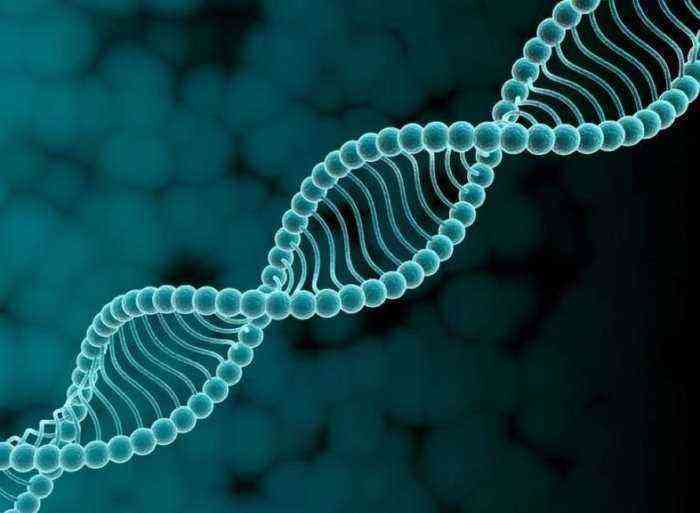Properly organized housing conditions, nutrition and care can significantly reduce the risk of developing diseases in horses. But it is not possible to completely protect animals from infectious and non-infectious diseases. Therefore, each breeder must be able to timely identify a developing disease in a horse and take appropriate measures to eliminate it.
sick horse
Common signs of illness in horses
One of the main conditions for the successful treatment of horse diseases and prevention of their spread within the herd is timely detection. This is facilitated by knowledge of the characteristic signs of a particular disease. However, there are a number of common points that signal that something is wrong with the animal. These include:
- a sharp increase or decrease in body temperature;
- the appearance of lethargy and apathy or excessive restlessness;
- blurred eyes;
- decreased or complete lack of appetite;
- deterioration in the quality of wool, which becomes dull, dry and easily broken;
- discoloration of mucous membranes.
Many signs are characteristic of diseases of a particular body system or certain organs. So, in the event of an animal refusing food and diarrhea, most often the source of the disease should be sought in the digestive system. With a decrease in activity and inactivity, attention is paid to the limbs. A large number of horse diseases are also accompanied by shortness of breath and heart palpitations.
Classification of diseases
For ease of definition and study, equine diseases, like diseases of other domestic animals, are divided into several categories. The most extensive classification is represented by two main groups:
- Infectious.
- Non-infectious.
The first category, depending on the source of the disease, also involves the division into:
- Bacterial. The disease develops during the life of pathogenic bacteria in tissues and organs. These include myt, pasteurellosis, salmonellosis, glanders and others.
- Viral. This group of diseases is caused by various viruses that develop in the horse’s body. Such a development mechanism is suggested by influenza, rabies and similar diseases.
Infectious diseases of horses
Infectious diseases of horses are dangerous because, without timely action, they quickly spread to the entire livestock. In addition, other pets and humans are also susceptible to many of them.
Tuberculosis
Tuberculosis affects the internal organs of the animal. The disease develops after a special type of mycobacteria enters the body of an animal. In an infected horse, the appearance of special bumps (tubercles) on the internal organs can be traced, which eventually die off, causing serious malfunctions in the whole organism. This disease implies a high mortality rate among animals.
Tuberculosis in horses
The main source of infection is a sick horse. It releases the pathogen into the external environment along with feces, saliva, sputum, milk and other body secretions. Bacteria enter the body of a healthy individual in two main ways:
- Through the respiratory tract.
- Through food containing the pathogen.
The first clinical signs of the disease appear after an incubation period of 1,5 months. The main symptoms of the disease include:
- a sharp increase in body temperature to 40 degrees and above;
- swollen lymph nodes;
- strong dry cough;
- severe wheezing in the lungs;
- the presence of particles of dead tissue in the sputum;
- rapid exhaustion.
Attention! There is no effective treatment for tuberculosis in horses, therefore, when a positive diagnosis is made, they are isolated and determined for slaughter.
pasteurellosis
Pasteurellosis affects various organs of the animal and quickly spreads throughout the body. The disease also suggests a bacterial nature. Its causative agent is the bacterium Pasteurella. It can also be transmitted to humans.
From the body of the carrier, the pathogen is excreted along with feces and mucus from the nose. It is transmitted to healthy animals through food contaminated with particles of mucus and feces, or by aerogenic means. After the end of the three-day incubation period, clinical signs appear, including:
- general apathy and lethargy;
- a sharp increase in temperature to the level of 41-42 degrees;
- coughing;
- presence of discharge from the eyes and nose;
- disorder of the digestive system;
- swelling can occur in various parts of the body.
The lethality of the disease ranges from 10 to 80%. Treatment is carried out on the basis of anti-pasteurellous serum, sulfonamides and antibiotics.
Horse pasteurellosis
Leptospirosis
Leptospirosis manifests itself in the form of damage to internal organs, which ends in the gradual necrosis of tissues. Moreover, in 40–60% of cases, the disease is fatal.
The causative agent is the bacterium Leptospira. Together with the urine of infected stallions and mares, it enters food and water, upon absorption of which the pathogen is transmitted to healthy livestock.
The following symptoms indicate the presence of the disease in an acute form:
- stomach upset;
- detection of blood in the urine;
- increased body temperature;
- the appearance of dead tissue on the skin and mucous membranes;
- yellowness of the mucous membranes;
- miscarriages in pregnant mares.
In the presence of a subacute form of the disease, all these points are expressed not so intensely.
Treatment is carried out on the basis of streptomycin, the dosage of which is determined by the veterinarian.
anthrax
This disease is considered one of the most dangerous for pets, as well as for humans. It is caused by a special rod bacterium, which is distinguished by increased resistance to external influences.
When infected, special seals appear on the skin and internal organs – carbuncles. Subsequently, they turn into extensive ulcers. The infection is transmitted very quickly. Infection occurs by bacterial spores in the following ways:
- through grass that has grown on soil contaminated with spores;
- airborne droplets from other animals;
- by direct contact with ulcers;
- when spores get into the prepared feed.
The symptoms of the disease are as follows:
- temperature 41–42 degrees;
- the animal is overly excited;
- convulsions;
- rapid weight loss;
- bluing of the mucous membrane of the eye.
The disease can occur in an acute or fulminant form. In the latter case, the death of the animal occurs as soon as possible. The chronic form is less common.
Anthrax in horses
Treatment is implemented on the basis of gamma globulin and special anthrax serum.
Smallpox
Smallpox is one of the viral diseases. When an infection enters the body, small purulent bulges appear throughout the body. Also, the disease is accompanied by a strong fever. From smallpox, 30 to 90% of all infected animals die. The virus is also dangerous for humans.
The pathogen is transmitted to the external environment from animal carriers through discharge from the nose and mouth of the animal, as well as with pockmarks showered from the body. The pathogen enters the body of a healthy individual in one of three ways:
- through the respiratory tract;
- along with food through the esophagus;
- by direct contact with infected tissues.
The symptoms of smallpox are as follows:
- fever;
- the presence of purulent blisters on the skin;
- atypical movements due to pain.
Smallpox is treated with gamma globulin, various antibiotics and means for symptomatic treatment (ointments for smallpox, boric acid for treating wounds in the mouth, etc.).
infectious anemia
The infectious anemia virus is transmitted from one horse to another in the following ways:
- For insect bites.
- Through the needle of a syringe used to work with livestock.
- In the event of an accident.
- Through the skin through contact with care tools and manure.
- Through feed, into which viral particles enter with feces, urine, milk or mucous secretions.
During an illness, an animal can develop anemia, blood poisoning, and sudden changes in temperature. The lethality of the disease is 80-85%. Cases of disease in young animals almost always end in death.
The clinical picture includes:
- general oppression;
- frequent sudden changes in temperature;
- swelling on the body;
- mucosal bleeding.
With the development of the chronic form, rapid weight loss is also observed.
There is no effective treatment for infectious anemia in horses.
Myt
This disease in horses is caused by a special type of streptococcus. It is manifested by acute inflammation of the mucous membranes, as well as lymph nodes. The lethality of the disease is 70%. It is especially dangerous for young animals.
Washing horses
The transmission of bacteria occurs by airborne and alimentary routes. After infection, the disease manifests itself with the following symptoms:
- lethargy and loss of appetite;
- increased body temperature;
- inflammation of the mucous membranes of the nose and mouth;
- an increase in the lymph nodes located near the jaw.
As a rule, the disease lasts from 15 to 30 days. Treatment is based on antibiotics.
Glanders
Sap is the appearance of small nodules on the skin of an animal, which gradually turn into open ulcers. The disease is caused by a special series of bacteria that enter the body with food, as well as through contact with feces and tools.
The incubation period of the disease is from 7 to 21 days. Then it proceeds in an acute chronic or latent form. The characteristic signs of an acute course are:
- general oppression;
- swollen lymph nodes;
- temperature rise up to 42 degrees;
- inflammation of the mucous membranes;
- small ulcers on the thighs, limbs, in the nasal cavity.
Attention! Sick livestock is determined for slaughter, as treatment is ineffective.
accidental disease
The disease develops during infection of the genital organs with trypanosomes. As a result of this, the genitals become inflamed, swell, the horse suffers from convulsions and paralysis. The disease is transmitted during mating of animals.
The characteristic signs of the disease are:
- swelling of the genitals;
- the formation of small ulcers on the mucous membranes;
- the appearance of plaques on the skin of a horse;
- damage to the central nervous system, which manifests itself in paralysis of the facial and other nerves, as well as in convulsions;
- involuntary urination;
- developing atrophy of the body.
Treatment with drugs Naganin and Azidin.
Skin diseases
Skin diseases in horses are also common. In the absence of prompt measures, they are quickly transmitted to the entire livestock and can cause serious complications.
Lichen
Lichen in horses is quite common. Such a disease is quickly transmitted from one animal to another through direct contact or through care items and harness. Most often, this ailment can be traced in young animals.
Ringworm in horses
Lichen appears in the form of baldness of certain areas of the skin on the neck, sides and shoulder blades. Also among the signs of the disease include:
- foal depression;
- constant attempts to scratch the affected area on the protruding elements of the corral;
- intense weight loss.
Immediately after the detection of these symptoms, the affected animal is isolated from the main livestock. Further, the affected areas of the skin are treated with special ointments.
Scabies
Scabies in horses occurs when the skin is affected by mites. Evidence of the development of the disease are:
- restless behavior;
- baldness of certain areas of the scalp and neck;
- the appearance of scabs;
- the animal is constantly itching.
The disease is treated with Wagenfeld ointment.
Urine
If stallions and mares are constantly kept in damp stalls, then they often develop biting midges. This disease involves the appearance of cracks in the skin in the area of the fetlock joint of the leg. Over time, such cracks turn into ulcers that cause pain and discomfort to animals.
In the course of the development of the disease, the ulcers begin to fester, and pus is released outward. If therapeutic measures are not taken in a timely manner, ulcers gradually move to other areas of the skin.
Limb diseases
In case of non-compliance with the main points of maintenance and feeding, horses may also have problems with the health of the limbs and joints. Such diseases are dangerous because in the absence of proper treatment, the horse may even lose the ability to move independently.
Rheumatic inflammation of the hooves
Inflammatory processes in this disease affect the skin at the base of the hoof. There may be several reasons for this phenomenon:
- incorrectly composed diet;
- too frequent riding on hard surfaces;
- problems with heart.
Symptoms of the disease are as follows:
- inflammation of the sole of the hoof;
- lameness;
- increased body temperature of the animal;
- rapid breathing.
Rheumatic inflammation of the hooves
The treatment is complex and consists of the normalization of care conditions, providing rest to the animal and drug therapy.
Rotting frog hooves
This disease also develops against the background of non-compliance with the rules for keeping animals and the presence of a large amount of dirt in the stalls. Under such conditions, part of the tissue on the sole of the hoof begins to rot, turning into a black soft mass. In parallel, cracks appear on the arrow, which cause discomfort in the animal during movement. If not treated in time, the decay will spread and the hoof may be lost.
Non-communicable diseases
Non-contagious diseases develop only in one animal and are not transmitted to others. But, despite the lack of distribution, such an ailment can also be quite dangerous and cause irreparable harm to the health of living creatures.
Mastitis
Mastitis is an inflammation of the udder in mares. There are several reasons for this phenomenon:
- milk stasis;
- udder damage;
- getting inside the infection;
- hypothermia of the mammary gland.
Disease symptoms:
- anxiety;
- temperature increase;
- swelling and redness of the udder;
- gradual death of individual tissue sections.
Treatment is carried out on the basis of medications and normalization of conditions of detention.
Colic
Under this name, severe pain in the intestines of the animal, caused by a violation of feeding, is hidden. Colic can be the result of many diseases of the housing and communal services.
Clinical manifestations include:
- restless behavior of the horse;
- constant tilting of the head;
- excessive sweating.
Treatment is prescribed based on an accurate definition of the source of the problem.
Burnout or shortness of breath
Chronic shortness of breath occurs in horses when part of the lungs ceases to function (usually due to the death of the alveoli). The reason for this is the improper treatment of respiratory diseases, keeping animals in dust and dirt.
The disease is manifested by coughing and heavy rapid breathing. The exact treatment is prescribed exclusively by a veterinarian.
Conclusion
The state of health of the horse directly affects its athletic performance, work productivity and well-being in general. Therefore, the breeder should pay special attention to the study of existing diseases and ways to determine them.
